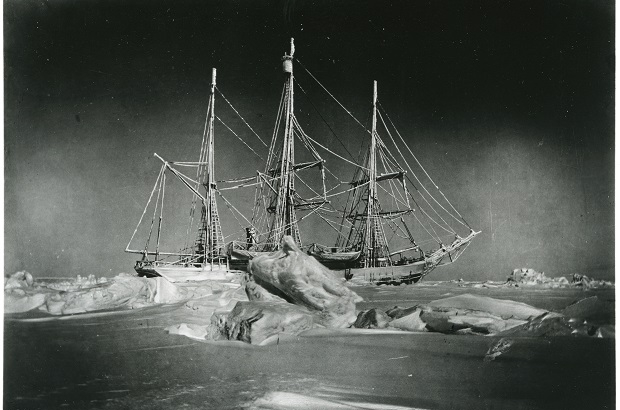- Daily & Weekly newsletters
- Buy & download The Bulletin
- Comment on our articles
Free exhibition on Belgica’s legendary Antarctica expedition appeals to visitors to save the planet
Celebrating the 125th anniversary of the intrepid Belgian steamship’s departure from the port of Antwerp is the free exhibition In search of... The end of the world! A climate expedition aboard the ‘Belgica’.
The commemorative show at BELvue Museum until 4 February, boasts a double mission. As well as commemorating the historic Belgian-led scientific voyage, it raises awareness about the threat of rising air and sea temperatures and how individuals can adopt eco-friendly practices to help counteract climate changes.
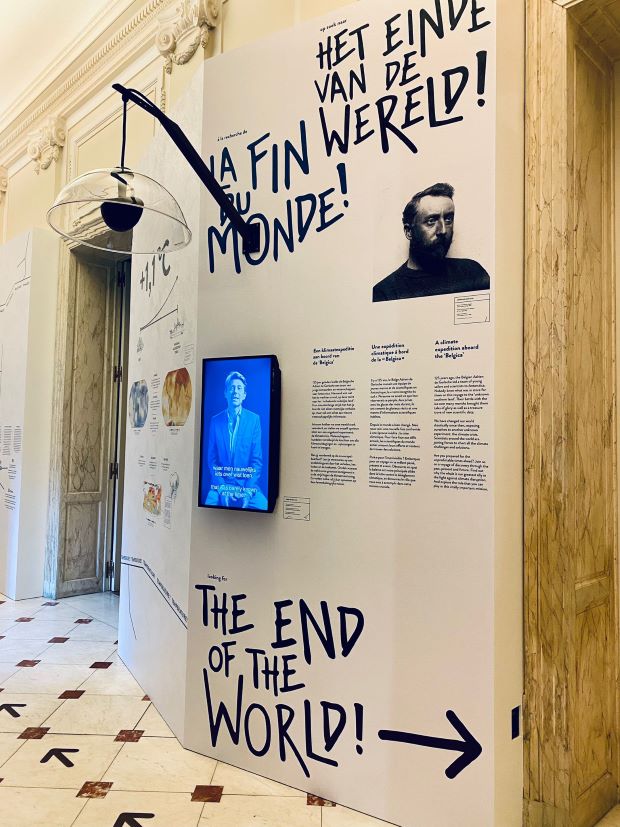
Spread over three rooms, each with a different focus, themes range from the human challenges that the crew faced 125 years ago to scientific research on Antarctica and the consequences of the ice melting for everyone. The whale serves as an emblem throughout; a metaphor for the threat to the planet and a symbol of hope for the future.
“If we save the whale, we also participate in saving the planet and everyone can do their part,” is the exhibition’s key message, especially orientated to younger visitors.
An initiative of the King Baudouin Foundation, collaboration with scientific bodies includes the Gerlache Polar Memory.
If the Belgica’s task was to gather scientific research from its south polar journey, the two-year expedition was notorious for being the first to spend the winter in the harsh icy conditions. Intriguingly, its unique collection of data and observations was overlooked for 40 years, yet remains relevant to scientists and meteorologists today.
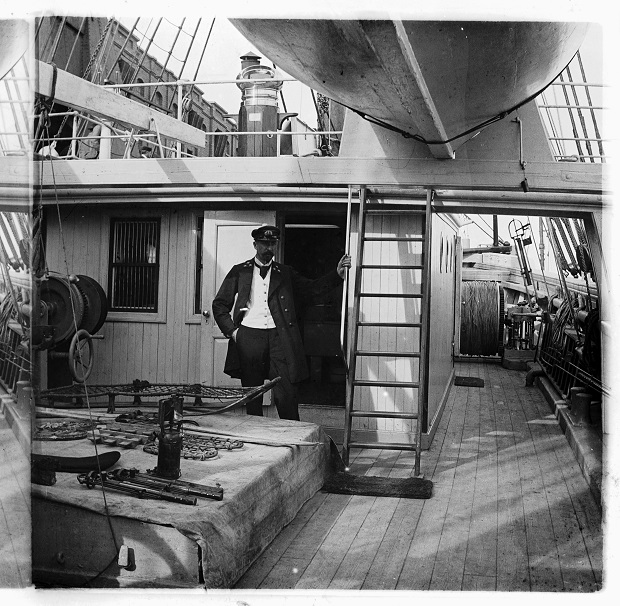
Under the command of Belgian naval officer Adrien de Gerlache (pictured on deck), the Belgica – a repurposed Norwegian whaler – was unusual for the time in being manned by an international crew. With an average age of 27, many of them were lacking maritime experience.
They nevertheless included two men who were to become notable polar explorers. Norwegian first mate Roald Amundsen was the first man to reach the South Pole, while American doctor would later claim controversially to be the first man to reach the North Pole.
Original documents, photographs and objects from the expedition include charts and rare samples and plants. Chillingly, these evocative displays are accompanied by dramatic sound effects; howling wind and the grinding of timbers mimic the ship shifting in its pack ice prison. The doctor doubled as the photographer on board, heading out in moonlight to take the stunning and atmospheric images of the Belgica’s ice-bound plight.
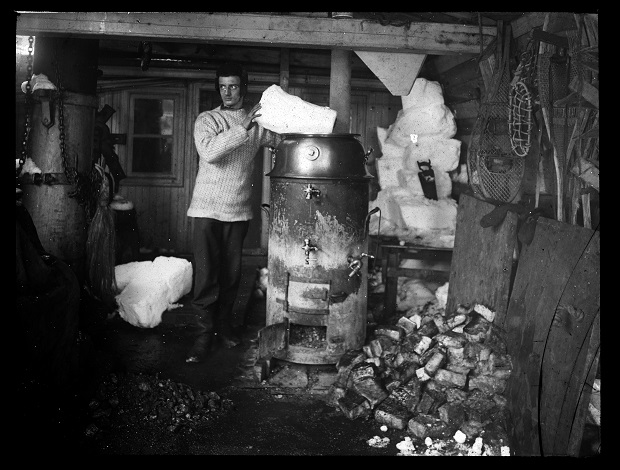
The unplanned overwintering in Antarctica was a mental as well as physical onslaught. Morale plummeted, not helped by 63 days without sunlight and dangerously low rations. It was the doctor, along with ship cook Louis Michotte, who persuaded the reluctant crew to consume raw penguin and seal meat for their essential nutrients.
In addition to contributions from meteorologists, glaciologists and climate experts, a clinical psychologist outlines the human skills that the men had to draw on to survive. Further hardship included the loss of a Norwegian sailor who died in the freezing water after falling overboard. Another crew member was to die of heart failure.
Scientific research continued throughout the expedition with weather reports recorded hourly. Before its winter entrapment, the crew had explored a new passageway that was initially named the Belgica Strait but later renamed the Gerlache strait, in honour of the Belgian captain.
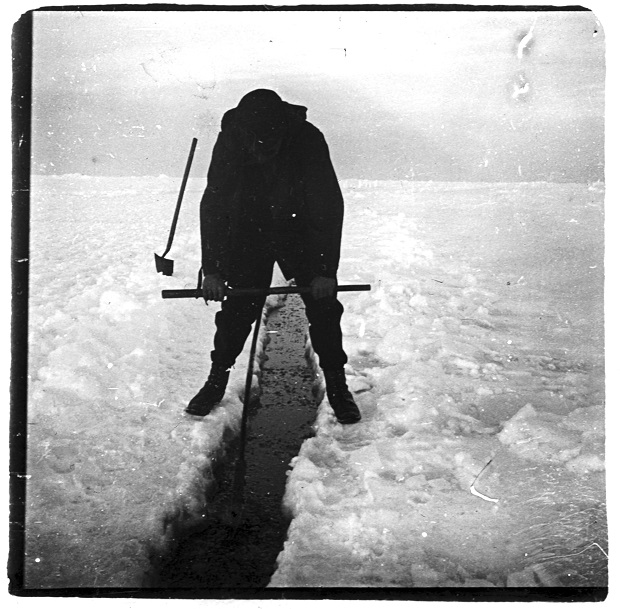
Despite numerous attempts to explode or dig their way out of the ice, it was not until March 1898 that the Belgica was finally freed and able to set a course in open water. She returned jubilantly to Antwerp in November that year, greeted with full fanfare as the first ship to survive an Antarctic winter. The King of Belgium awarded its officers and scientists the country’s highest distinction, the Order of Leopold.
But the Antarctica they left behind is not the same today. The depletion of natural resources in the driest and coldest continent is causing significant climate disruption. With the ice cap melting, many species are under threat.
Gerald de Hemptinne, advisor to KBF, points out that this is symptomatic of a global problem: "Unfortunately, what happens in Antarctica doesn't stay in Antarctica." He recognises the need for collective as well as individual efforts to change the planet’s course.
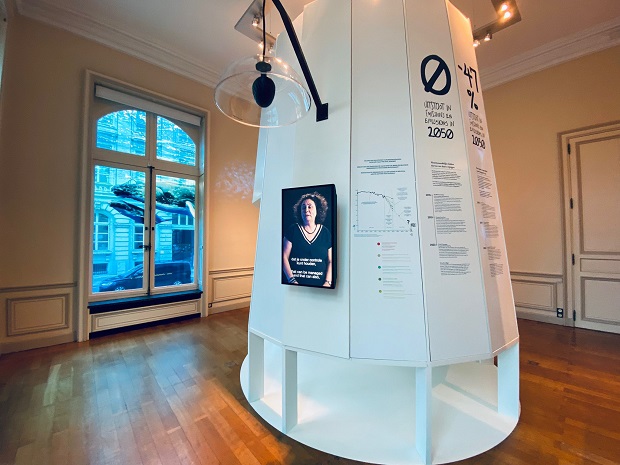
To the background of whale sounds, the exhibition’s final space features an immersive diving bell exhibit. It focuses on what people can do to help the climate, explains curator Jill Peeters, a geography and climate expert as well as VTM’s weather presenter.
“A lot of people want to do something but they don’t know what, so we provide good answers,” she says. Visitors can put a sticker against a number of options for more sustainable living such as choosing to upcycle or recycle as well as changing their diet and mode of transport.
“I hope that people feel that each and everyone has a role to play,” adds Peeters, referring to the Belgica crew’s teamwork. “They survived because of their collective spirit in all its imperfections and struggle.”
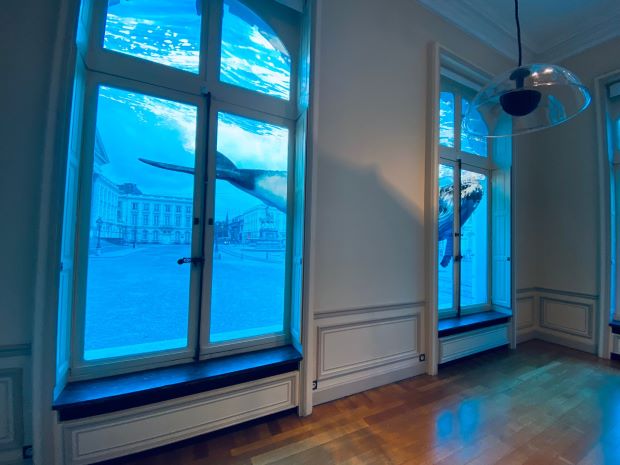
The multidisciplinary approach to scientific research on the ship is another example. “I wanted to bring the story of connections because the biggest thing that we can learn is connecting all the spheres together, such as biosphere and atmosphere.” Peeters regrets how scientific fields have grown away from each other.
“Being a meteorologist, I know how clouds are formed, but I didn’t know that fighter plankton under stress form clouds. That wasn’t in my books.”
For Adrien de Gerlache’s great-grandson Henri de Gerlache, the exhibition is a fitting tribute to Belgium’s contribution to scientific research. “It was a first, and it opened up the way to other countries own expeditions.”
He draws a parallel between the multinational make-up of the crew, “quite extraordinary for the time”, and the international work that continues on the continent via the zero-emission scientific research station, Princess Elisabeth Antarctica.
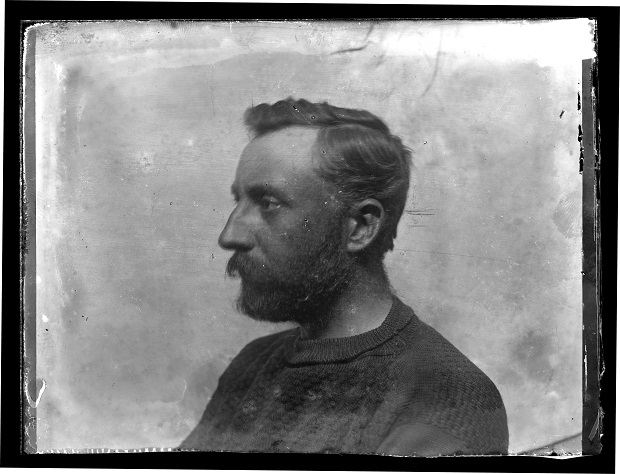
The documentary filmmaker has visited the continent twice himself in the footsteps of his pioneering ancestor (pictured). If de Gerlache was born after the explorer’s death, he learned about his character from his own father.
“He spoke of someone who was rather taciturn, who didn’t recount very much. But I have the impression that he was quite visionary, a deep thinker who had lots of friends among musicians and artists as well as scientists,” says de Gerlache. “He had a very open spirit, was ahead of his time and had a deep love of the sea.”
Photos: Belgica nuit polaire NB ©de Gerlache Polar Memory; adrien sur le pont Belgica© de Gerlache Polar Memory; 1897 int bateau fondre la glace© de Gerlache Polar Memory; le chenal© de Gerlache Polar Memory; adrien hivernage© de Gerlache Polar Memory; In situ photos © BELvue Museum












